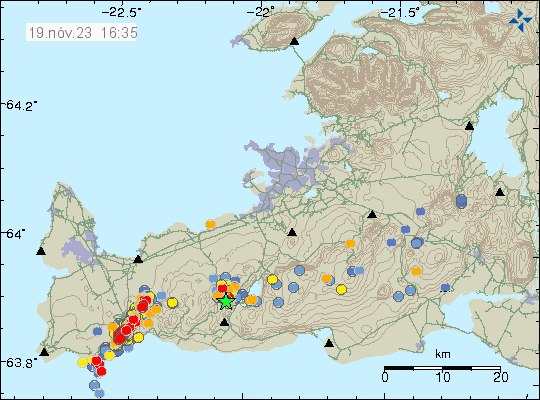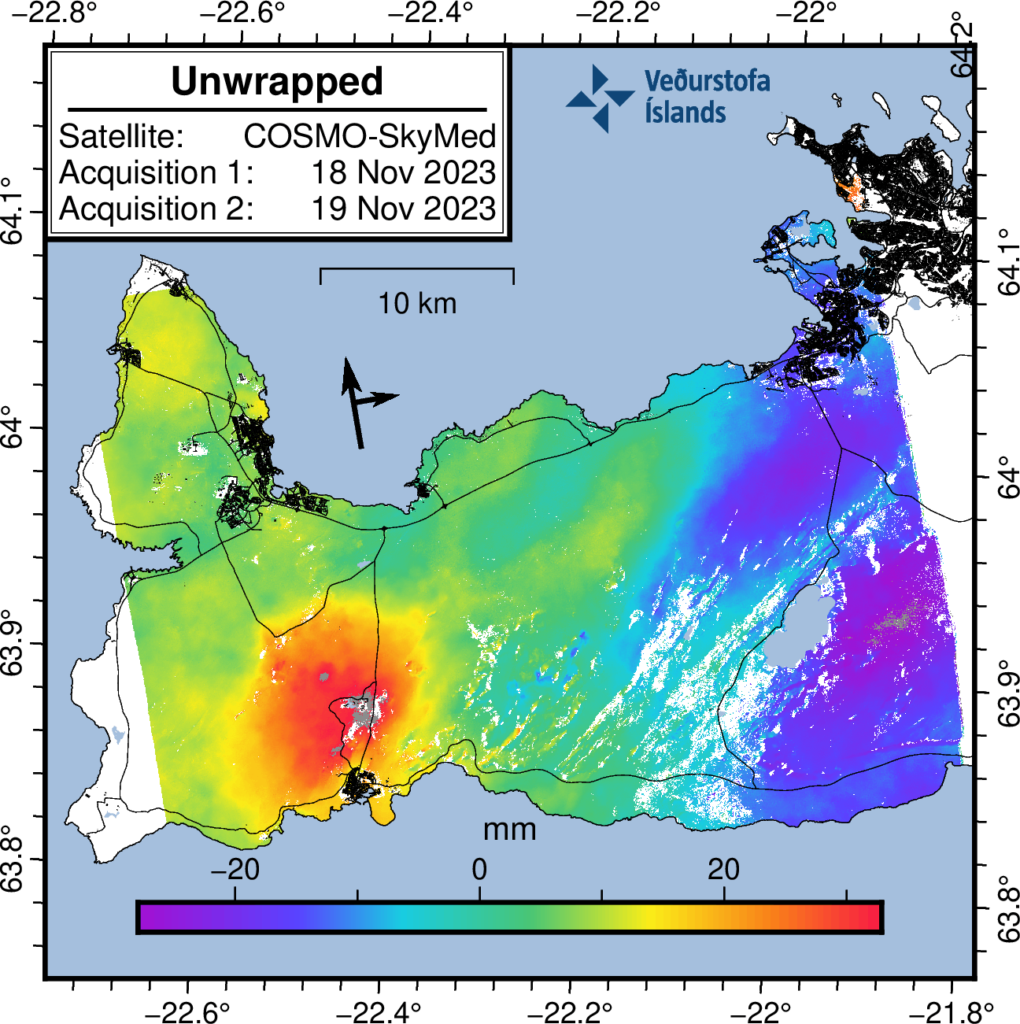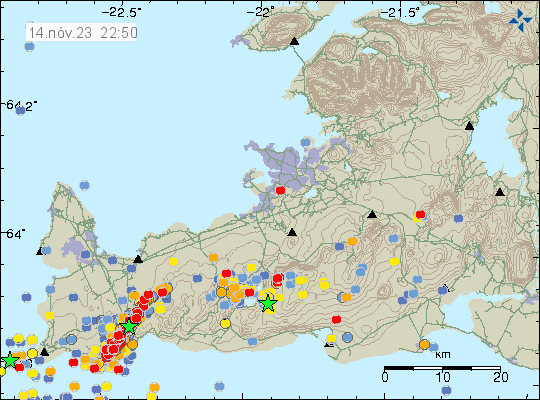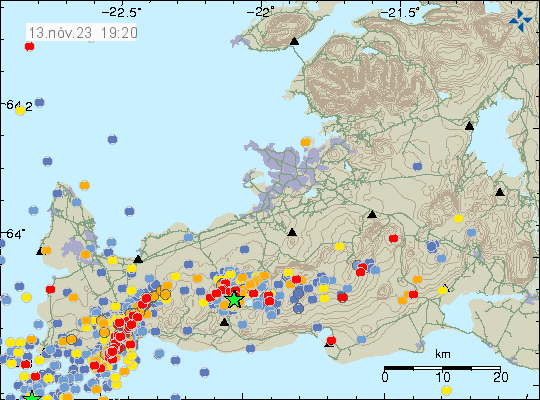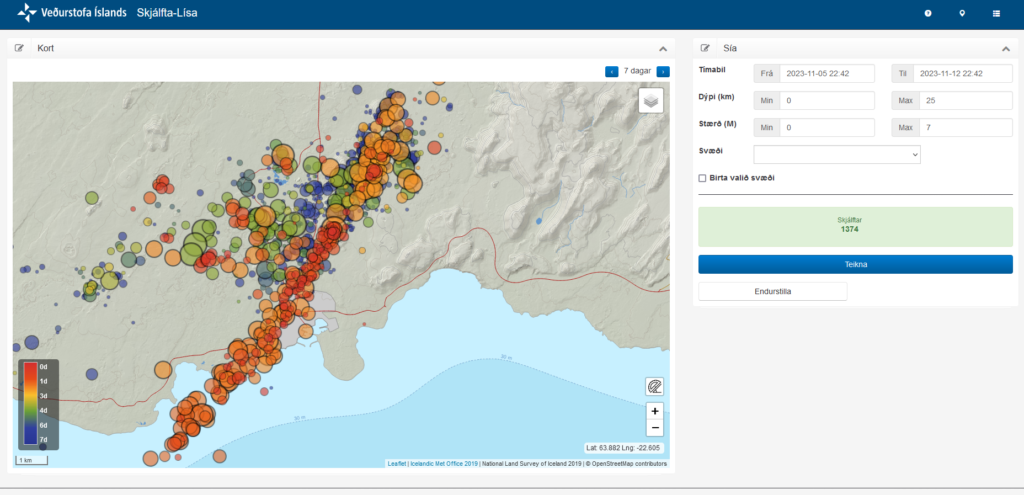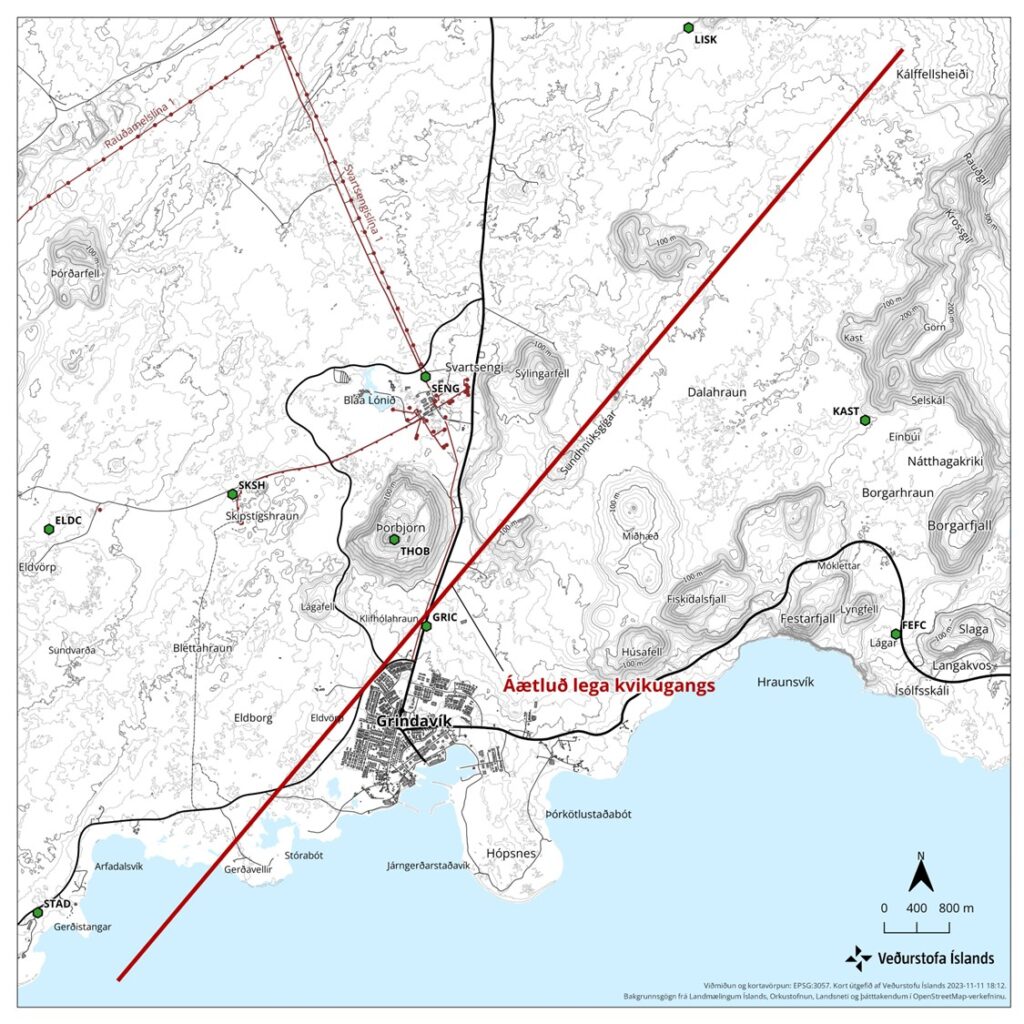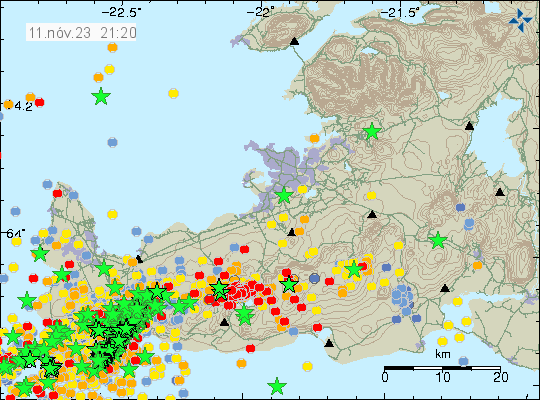This is a short update on the situation in Sundhnúkagíga on 27. December 2023 at 20:40 UTC. Information here can go outdated without warning and quickly.
There’s inflation taking place in Svartsengi volcano. At current rate this inflation is around 10mm a day. This means that earliest an eruption might happen is around 30. December 2023 in my view. But it might happen as late as 10. January 2024. This inflation is really quick, but since last eruption only lowered Svartsengi volcano only around 80mm, the inflow of magma has less space to fill up before a critical point is reached in the crust in Sundhnúkagígaröðin area. This also means it takes shorter time for this to happen.
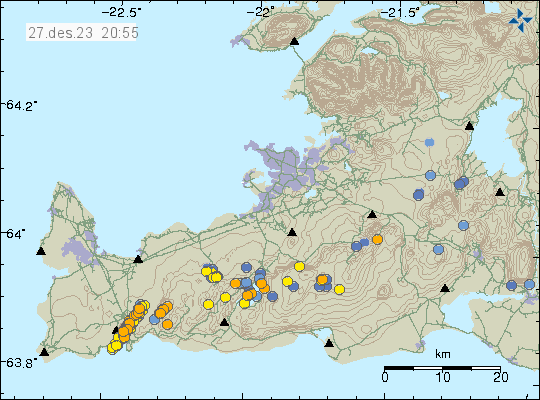
There’s also activity in Fagradalsfjall volcano. This is along a fault line that I don’t think has been active like this before. Why is unclear, but this might be an early sign that this fault in Fagradalsfjall volcano might erupt in the future. Since Fagradalsfjall volcano is on around ten month eruption cycle, this fault might erupt sometimes between May to September 2024. I am sure that this is going to get more clear as the time goes on if anything is going to happen in Fagradalsfjall volcano. Satellite images from Google Earth do show a clear fault in along the earthquake active area. This is possibly a known fault, but I do not have any information about that as is.
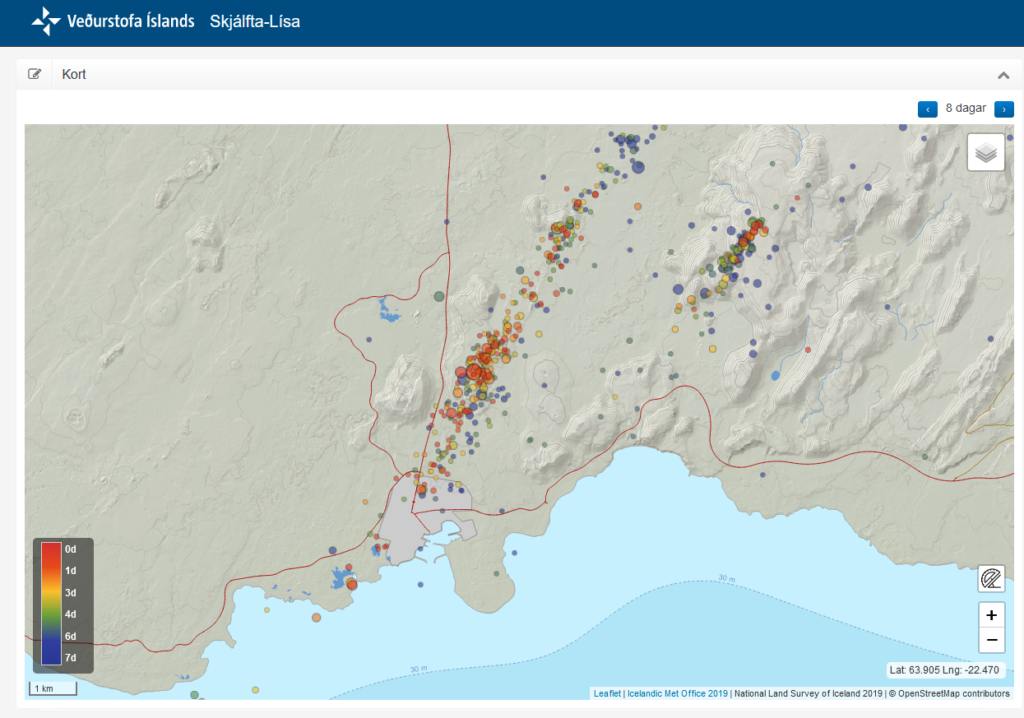
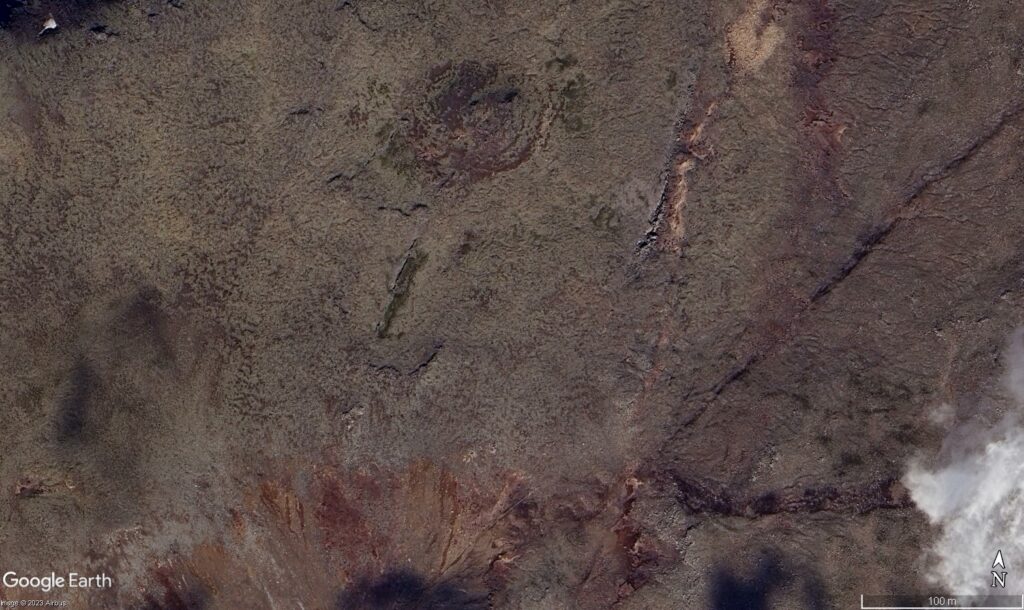
It is impossible to know what happens in Fagradalsfjall volcano and in Svartsengi volcano. This situation can change quickly and without warning. It can change so quickly that I might not be able to update about it quickly enough if this happens at a time when I am outside doing something else.
If anything happens. I’ll update soon as I can do so. Next update should be on 2. January 2024 if this remains quiet.

